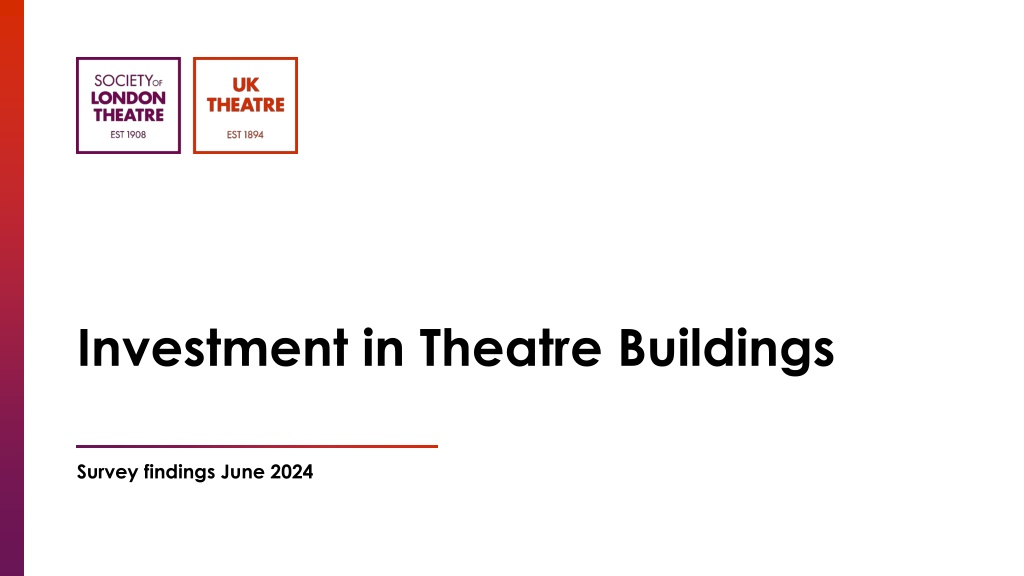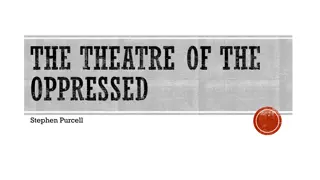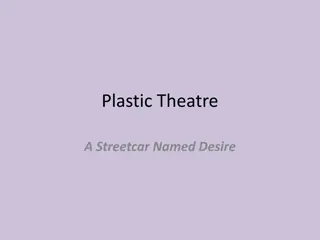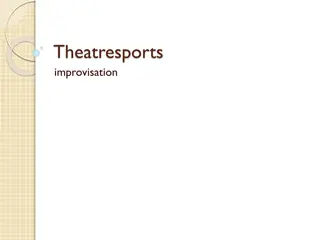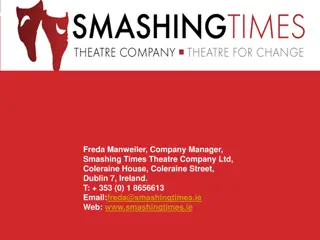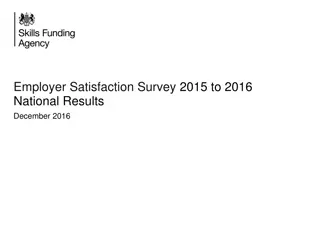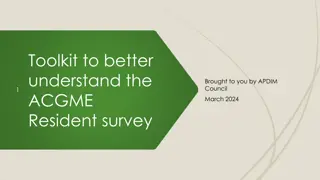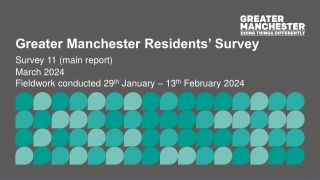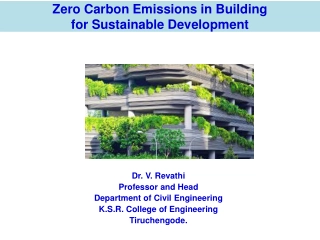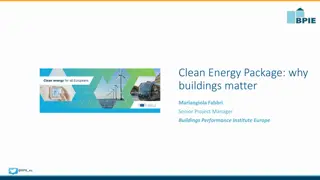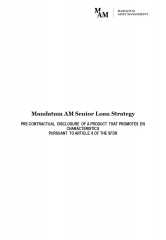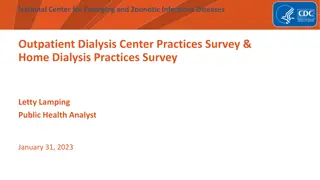Investment in Theatre Buildings Survey Findings - June 2024
Survey findings in June 2024 reveal that 1 in 5 SOLT & UK Theatre venues need over 5 million in investment to sustain operations. Without this support, closure and safety concerns loom. Access to necessary funds would improve sustainability, programming diversity, job creation, and community outreach while enhancing accessibility for Victorian-era buildings.
Download Presentation

Please find below an Image/Link to download the presentation.
The content on the website is provided AS IS for your information and personal use only. It may not be sold, licensed, or shared on other websites without obtaining consent from the author. Download presentation by click this link. If you encounter any issues during the download, it is possible that the publisher has removed the file from their server.
E N D
Presentation Transcript
Investment in Theatre Buildings Survey findings June 2024
Key Findings A survey of 65 SOLT & UK Theatre venues found that: 1 in 5 venues require at least 5m in the next 10 years just to continue current operations Without significant capital investment in the next 5 years: Almost 40% of venues risk closure 40% of venues would become too unsafe to use However, if theatres can access the investment they need: 100% of venues would improve their environmental sustainability 57% would be able to increase the variety of programming 42% of presenting venues would be able to produce their own work 54% would provide more jobs for their local communities 62% would increase or improve outreach work 100% of buildings built in the Victorian period would be able to increase accessibility for audiences
1 in 5 venues will require more than 5m of investment just to continue current operations How much capital investment would be required to: 35 49% 30 Every survey respondent reported that their venue would require capital investment in vital building maintenance or infrastructure in the next ten years, the costs of these works varied substantially. 25 31% 20 29% 15 20%19% 15% 15% 10 5% 5% 5% 5 3% 2% 2% 0 200m + 1m - 4.99m 5m - 9.99m 1m - 4.99m 5m - 9.99m 20m - 49.99m 50m - 99.99m < 1m < 1m 10m - 19.99m 20m - 49.99m 50m - 99.99m 100m - 199.99m 10m - 19.99m 100m - 199.99m 200m+ Continue current operations Complete all potential works
Almost 40% of venues risk closure without capital investment in the next 5 years If you didn t do any investment in infrastructure over the next five years, what may happen? 76% of presenting venues would not be able to put on all the productions they would like compared with 55% of producing venues. a risk to our financial viability 75% running costs will increase substantially 74% could not put on all productions we would like 65% 47% of producing venues would become too unsafe to use compared with 29% of presenting venues have to deplete our reserves 57% venue would become too unsafe to use 40% not be able to continue operating as a business 38% 45% of theatres outside of London would not be able to continue operating as a business compared with 28% of London-based venues have to reduce outreach work 38% have to employ fewer people 37% have more dark weeks 32% 90% of Victorian Theatres would not be able to put on all the productions they would like. lose access to performance spaces 28% Other 12% None of the above 2% 0 10 20 30 40 50 60
Capital Investment Supports Theatres To Thrive Theatres reported that Capital Investment in their buildings would help them to: Produce and present innovative programming Maintain financial viability as businesses Capital Investment In Theatres Ensure spaces are accessible and environmentally sustainable Become cultural hubs for their community
Innovative programming New and innovative productions require fit-for-purpose theatres to present in. Capital investment will support new and variedprogramming in SOLT & UK Theatre venues. If you maximised the opportunities for capital investment in infrastructure, what could you achieve? Programming/Capacity 42% of presenting venues would be able to program/develop their own work. Improve the building s functionality 92% 70% of venues outside London would increase the variety of their programming compared with 36% in London. Increase variety of programming 57% Build new rehearsal/studio spaces 45% Increase number of performances 42% Allow us to program/develop our own work 38% Increase number/variety of touring shows 38% Increase the number of productions 34% 45% of venues built in the Victorian periodwould build new performance spaces, compared with 19% of post-war buildings Build new workspaces for crafts/trades 34% Increase capacity in current spaces 32% Build new performance spaces 25% Other 8% None of the above 2% 0 20 40 60 80
Supporting the local economy For every 1 spent on a theatre ticket, an additional spend of 1.40 is generated in local economies. Capital investment is vital in improving the financial resilience of theatres. If you maximised the opportunities for capital investment in infrastructure, what could you achieve? Financial sustainability [We would] introduce a best-in-class education service in partnership with our neighbouring college by investing in dedicated New Theatre Studio Spaces. Increasing our capacity with Circle Seating upgrades to deliver larger premium shows and house larger audiences. Improve financial resilience/sustainability 97% Save money on running costs 92% Increase trading activity 72% Employ more people 54% Sell more tickets 52% Other 12% None of the above 0% 0 10 20 30 40 50 60 70
Sustainable spaces If you maximised the opportunities for capital investment in infrastructure, what could you achieve? EDI and Sustainability 100% of Victorian buildings would use capital investment to increase accessibility for audiences, 90% would also increase accessibility for performers. Improve environmental sustainability 100% Reduce our carbon footprint 92% Increase accessibility for staff and performers 82% 96% of London-based venues would use capital investment to reduce their carbon footprint. Improve health and safety of venue 77% Increase accessibility for audiences 77% 85% ofvenues outside London would increase accessibility for staff and performers. Other 5% None of the above 0% 0 10 20 30 40 50 60 70
Cultural placemaking Theatres are local hubs for their community, bringing footfall to highstreets, celebrating local culture, educating and enriching through schools and skills work and preserving historic buildings. Capital investment ensures they can fulfil this vital role. If you maximised the opportunities for capital investment in infrastructure, what could you achieve? Cultural/community placemaking [We would] build future arts careers, train more people. Reach more people through participation activity. Preserve heritage building/cultural landmarks 74% Increase or improve outreach work 63% Collaborate [with our local] University to create a theatre of the future [and] enable study of impact of arts & culture on audiences Provide cultural/community focused events 62% Provide skills training for the local community 60% Support high street / community regeneration 58% None of the above 3% Other 0% 0 10 20 30 40 50 60
Profile of respondents We received responses from 65 SOLT & UK Theatre venues, the profile is as follows: I am responding on behalf of 62 UK Theatre members Presenting venue: 21 Not-for-profit producing venue: 33 Commercial producing venue: 3 Other: 8 (Others included arts centre, combination producing and presenting, studio spaces and educational spaces) Scotland: 6 20 SOLT members England: 32 When was your largest auditorium built? Wales: 2 Victorian (Earlier than 1890): 11 Pre-war (1890 1945): 15 Post-war (1945-1990): 26 Millenium (1990 or later): 13 London: 25
